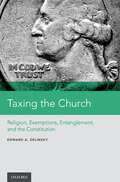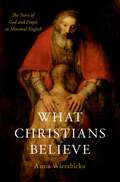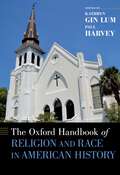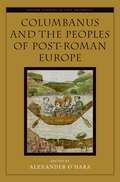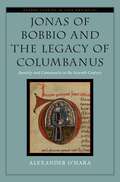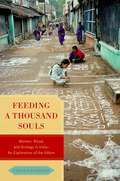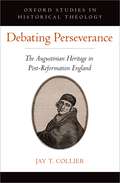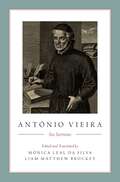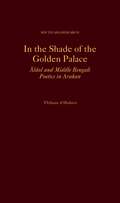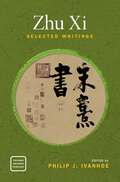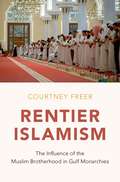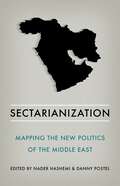- Table View
- List View
Taxing the Church: Religion, Exemptions, Entanglement, and the Constitution
by Edward A. ZelinskyThis book explores the taxation and exemption of churches and other religious institutions, both empirically and normatively. This exploration reveals that churches and other religious institutions are treated diversely by the federal and state tax systems. Sectarian institutions pay more tax than many believe. In important respects, the states differ among themselves in their respective approaches to the taxation of sectarian entities. Either taxing or exempting churches and other sectarian entities entangles church and state. The taxes to which churches are more frequently subject - federal Social Security and Medicare taxes, sales taxes, real estate conveyance taxes - fall on the less entangling end of the spectrum. The taxes from which religious institutions are exempt - general income taxes, value-based property taxes, unemployment taxes - are typically taxes with the greatest potential for church-state enforcement entanglement. It is unpersuasive to reflexively denounce the tax exemption of religious actors and institutions as a subsidy. Tax exemption can implement the secular, non-subsidizing goal of minimizing church-state enforcement entanglement and thus be regarded as part of a normative tax base. Taxing the church or exempting the church involves often difficult trade-offs among competing and legitimate values. On balance, our federal system of decentralized legislation reasonably make these legal and tax policy trade-offs, though there is room for improvement in particular settings such as the protection of internal church communications and the expansion of the churches' sales tax liabilities.
Taxing the Church: Religion, Exemptions, Entanglement, and the Constitution
by Edward A. ZelinskyThis book explores the taxation and exemption of churches and other religious institutions, both empirically and normatively. This exploration reveals that churches and other religious institutions are treated diversely by the federal and state tax systems. Sectarian institutions pay more tax than many believe. In important respects, the states differ among themselves in their respective approaches to the taxation of sectarian entities. Either taxing or exempting churches and other sectarian entities entangles church and state. The taxes to which churches are more frequently subject - federal Social Security and Medicare taxes, sales taxes, real estate conveyance taxes - fall on the less entangling end of the spectrum. The taxes from which religious institutions are exempt - general income taxes, value-based property taxes, unemployment taxes - are typically taxes with the greatest potential for church-state enforcement entanglement. It is unpersuasive to reflexively denounce the tax exemption of religious actors and institutions as a subsidy. Tax exemption can implement the secular, non-subsidizing goal of minimizing church-state enforcement entanglement and thus be regarded as part of a normative tax base. Taxing the church or exempting the church involves often difficult trade-offs among competing and legitimate values. On balance, our federal system of decentralized legislation reasonably make these legal and tax policy trade-offs, though there is room for improvement in particular settings such as the protection of internal church communications and the expansion of the churches' sales tax liabilities.
What Christians Believe: The Story of God and People in Minimal English
by Anna WierzbickaMany people today, both Christians and non-Christians, are confused about or unaware of the essentials of Christian faith. In this book, Anna Wierzbicka takes a radically new approach to the task of communicating "what Christians believe" to the widest possible audience. "The Story of God and People," the heart of the book, sets out the core tenets of Christian faith in narrative form using simple language that is accessible to anyone, even those with no familiarity with Christianity or Christian vocabulary. The Story is not only simple but also universal: though written in English, it is not phrased in full English--English as we know it today, shaped by history, culture, and tradition--but in "Minimal English." Minimal English contains only those 400 or so English words that can be translated into any other language; essentially, it corresponds to the shared core of all languages. In the introduction to the book, Wierzbicka explains Minimal English and minimal languages in general, and in "The Story of God and People" that follows, she demonstrates the effectiveness of Minimal English as a tool for global understanding. At the same time, the use of Minimal English allows her not only to retell the Christian story in a strikingly new way, but also to rethink its meaning, bringing into relief its internal cohesion, logic and beauty.
What Christians Believe: The Story of God and People in Minimal English
by Anna WierzbickaMany people today, both Christians and non-Christians, are confused about or unaware of the essentials of Christian faith. In this book, Anna Wierzbicka takes a radically new approach to the task of communicating "what Christians believe" to the widest possible audience. "The Story of God and People," the heart of the book, sets out the core tenets of Christian faith in narrative form using simple language that is accessible to anyone, even those with no familiarity with Christianity or Christian vocabulary. The Story is not only simple but also universal: though written in English, it is not phrased in full English--English as we know it today, shaped by history, culture, and tradition--but in "Minimal English." Minimal English contains only those 400 or so English words that can be translated into any other language; essentially, it corresponds to the shared core of all languages. In the introduction to the book, Wierzbicka explains Minimal English and minimal languages in general, and in "The Story of God and People" that follows, she demonstrates the effectiveness of Minimal English as a tool for global understanding. At the same time, the use of Minimal English allows her not only to retell the Christian story in a strikingly new way, but also to rethink its meaning, bringing into relief its internal cohesion, logic and beauty.
Cowboy Christians
by Marie W. DallamCowboy Christians examines the long history of cowboy Christianity in the American West, with a focus on the present-day cowboy church movement. Based on five years of historical and sociological fieldwork in cowboy Christian communities, this book draws on interviews with leaders of cowboy churches, traveling rodeo ministries, and chaplains who serve horse racing and bull riding communities, along with the author's first-hand experiences as a participant observer. Marie W. Dallam traces cowboy Christianity from the postbellum period into the twenty-first century, looking at religious life among cowboys on the range as well as its representation in popular imagery and the media. She examines the structure, theology, and perpetuation of the modern cowboy church, and speculates on future challenges the institution may face, such as the relegation of women to subordinate participant roles at a time of increasing gender equality in the larger society. She also explores the cowboy Christian proclivity for blending the secular and the sacred in leisure environments like arenas, racetracks, and rodeos. Dallam locates the modern cowboy church as a descendant of the muscular Christianity movement, the Jesus movement, and new paradigm church methodology. Cowboy Christians establishes the religious significance of the cowboy church movement, particularly relative to twenty-first-century evangelical Protestantism, and contributes to a deeper understanding of the unique Christianity of the American West.
Cowboy Christians
by Marie W. DallamCowboy Christians examines the long history of cowboy Christianity in the American West, with a focus on the present-day cowboy church movement. Based on five years of historical and sociological fieldwork in cowboy Christian communities, this book draws on interviews with leaders of cowboy churches, traveling rodeo ministries, and chaplains who serve horse racing and bull riding communities, along with the author's first-hand experiences as a participant observer. Marie W. Dallam traces cowboy Christianity from the postbellum period into the twenty-first century, looking at religious life among cowboys on the range as well as its representation in popular imagery and the media. She examines the structure, theology, and perpetuation of the modern cowboy church, and speculates on future challenges the institution may face, such as the relegation of women to subordinate participant roles at a time of increasing gender equality in the larger society. She also explores the cowboy Christian proclivity for blending the secular and the sacred in leisure environments like arenas, racetracks, and rodeos. Dallam locates the modern cowboy church as a descendant of the muscular Christianity movement, the Jesus movement, and new paradigm church methodology. Cowboy Christians establishes the religious significance of the cowboy church movement, particularly relative to twenty-first-century evangelical Protestantism, and contributes to a deeper understanding of the unique Christianity of the American West.
The Oxford Handbook of Religion and Race in American History (Oxford Handbooks)
by Kathryn Gin Lum and Paul HarveyThe Oxford Handbook of Religion and Race in American History brings together a number of established scholars, as well as younger scholars on the rise, to provide a scholarly overview for those interested in the role of religion and race in American history. Thirty-four scholars from the fields of History, Religious Studies, Sociology, Anthropology, and more investigate the complex interdependencies of religion and race from pre-Columbian origins to the present. The volume addresses the religious experience, social realities, theologies, and sociologies of racialized groups in American religious history, as well as the ways that religious myths, institutions, and practices contributed to their racialization. Part One begins with a broad introductory survey outlining some of the major terms and explaining the intersections of race and religions in various traditions and cultures across time. Part Two provides chronologically arranged accounts of specific historical periods that follow a narrative of religion and race through four-plus centuries. Taken together, The Oxford Handbook of Religion and Race in American History provides a reliable scholarly text and resource to summarize and guide work in this subject, and to help make sense of contemporary issues and dilemmas.
Columbanus and the Peoples of Post-Roman Europe (Oxford Studies in Late Antiquity)
by Alexander O'HaraThe period 550 to 750 was one in which monastic culture became more firmly entrenched in Western Europe. The role of monasteries and their relationship to the social world around them was transformed during this period as monastic institutions became more integrated in social and political power networks. This collected volume of essays focuses on one of the central figures in this process, the Irish ascetic exile and monastic founder, Columbanus (c. 550-615), his travels on the Continent, and the monastic network he and his Frankish disciples established in Merovingian Gaul and Lombard Italy. The post-Roman kingdoms through which Columbanus travelled and established his monastic foundations were made up of many different communities of peoples. As an outsider and immigrant, how did Columbanus and his communities interact with these peoples? How did they negotiate differences and what emerged from these encounters? How societies interact with outsiders can reveal the inner workings and social norms of that culture. This volume aims to explore further the strands of this vibrant contact and to consider all of the geographical spheres in which Columbanus and his monastic communities operated (Ireland, Merovingian Gaul, Alamannia, Lombard Italy) and the varieties of communities he and his successors came in contact with - whether they be royal, ecclesiastic, aristocratic, or grass-roots.
Columbanus and the Peoples of Post-Roman Europe (Oxford Studies in Late Antiquity)
by Alexander O'HaraThe period 550 to 750 was one in which monastic culture became more firmly entrenched in Western Europe. The role of monasteries and their relationship to the social world around them was transformed during this period as monastic institutions became more integrated in social and political power networks. This collected volume of essays focuses on one of the central figures in this process, the Irish ascetic exile and monastic founder, Columbanus (c. 550-615), his travels on the Continent, and the monastic network he and his Frankish disciples established in Merovingian Gaul and Lombard Italy. The post-Roman kingdoms through which Columbanus travelled and established his monastic foundations were made up of many different communities of peoples. As an outsider and immigrant, how did Columbanus and his communities interact with these peoples? How did they negotiate differences and what emerged from these encounters? How societies interact with outsiders can reveal the inner workings and social norms of that culture. This volume aims to explore further the strands of this vibrant contact and to consider all of the geographical spheres in which Columbanus and his monastic communities operated (Ireland, Merovingian Gaul, Alamannia, Lombard Italy) and the varieties of communities he and his successors came in contact with - whether they be royal, ecclesiastic, aristocratic, or grass-roots.
Jonas of Bobbio and the Legacy of Columbanus: Sanctity and Community in the Seventh Century (Oxford Studies in Late Antiquity)
by Alexander O'HaraJonas of Bobbio, writing in the mid seventh century, was not only a major Latin monastic author, but also an historical figure in his own right. Born in the ancient Roman town of Susa in the foothills of the Italian Alps, he became a monk of Bobbio, the monastery founded by the Irish exile Columbanus, soon after his death in 615. He became the archivist and personal assistant to successive Bobbio abbots, travelled to Rome to obtain the first papal privilege of immunity, and served as a missionary priest on the northern borderlands of the Frankish kingdom. He spent the rest of his life in Merovingian Gaul as abbot of the double monastic community of Marchiennes-Hamage, where he wrote his Life of Columbanus, one of the most influential works of early medieval hagiography. This book, the first major study devoted to Jonas of Bobbio, his corpus of three saints' Lives, and the Columbanian familia, explores the development of the Columbanian monastic network and its relationship to its founder. The Life of Columbanus was written following a period of crisis within the Columbanian familia and it was in response to this crisis that the Bobbio community in Lombard Italy commissioned Jonas to write the work. Alexander O'Hara presents the Life of Columbanus as a subtle and clever critique of the changes and crises that had taken place in the monastic communities since Columbanus's death. It also considers the life of Jonas as reflecting many of the changing political, cultural, and religious circumstances of the seventh century, and his writings as instrumental in shaping new concepts of sanctity and community. The result of the study is a unique perspective on the early medieval Age of Saints and the monastic and political worlds of Merovingian Gaul and Lombard Italy in the seventh century.
Jonas of Bobbio and the Legacy of Columbanus: Sanctity and Community in the Seventh Century (Oxford Studies in Late Antiquity)
by Alexander O'HaraJonas of Bobbio, writing in the mid seventh century, was not only a major Latin monastic author, but also an historical figure in his own right. Born in the ancient Roman town of Susa in the foothills of the Italian Alps, he became a monk of Bobbio, the monastery founded by the Irish exile Columbanus, soon after his death in 615. He became the archivist and personal assistant to successive Bobbio abbots, travelled to Rome to obtain the first papal privilege of immunity, and served as a missionary priest on the northern borderlands of the Frankish kingdom. He spent the rest of his life in Merovingian Gaul as abbot of the double monastic community of Marchiennes-Hamage, where he wrote his Life of Columbanus, one of the most influential works of early medieval hagiography. This book, the first major study devoted to Jonas of Bobbio, his corpus of three saints' Lives, and the Columbanian familia, explores the development of the Columbanian monastic network and its relationship to its founder. The Life of Columbanus was written following a period of crisis within the Columbanian familia and it was in response to this crisis that the Bobbio community in Lombard Italy commissioned Jonas to write the work. Alexander O'Hara presents the Life of Columbanus as a subtle and clever critique of the changes and crises that had taken place in the monastic communities since Columbanus's death. It also considers the life of Jonas as reflecting many of the changing political, cultural, and religious circumstances of the seventh century, and his writings as instrumental in shaping new concepts of sanctity and community. The result of the study is a unique perspective on the early medieval Age of Saints and the monastic and political worlds of Merovingian Gaul and Lombard Italy in the seventh century.
Feeding a Thousand Souls: Women, Ritual, and Ecology in India- An Exploration of the Kolam
by Vijaya NagarajanEvery day millions of Tamil women in southeast India wake up before dawn to create a kolam, an ephemeral ritual design made with rice flour, on the thresholds of homes, businesses and temples. This thousand-year-old ritual welcomes and honors Lakshmi, the goddess of wealth and alertness, and Bhudevi, the goddess of the earth. Created by hand with great skill, artistry, and mathematical precision, the kolam disappears in a few hours, borne away by passing footsteps and hungry insects. This is the first comprehensive study of the kolam in the English language. It examines its significance in historical, mathematical, ecological, anthropological, and literary contexts. The culmination of Vijaya Nagarajan's many years of research and writing on this exacting ritual practice, Feeding a Thousand Souls celebrates the experiences, thoughts, and voices of the Tamil women who keep this tradition alive.
Feeding a Thousand Souls: Women, Ritual, and Ecology in India- An Exploration of the Kolam
by Vijaya NagarajanEvery day millions of Tamil women in southeast India wake up before dawn to create a kolam, an ephemeral ritual design made with rice flour, on the thresholds of homes, businesses and temples. This thousand-year-old ritual welcomes and honors Lakshmi, the goddess of wealth and alertness, and Bhudevi, the goddess of the earth. Created by hand with great skill, artistry, and mathematical precision, the kolam disappears in a few hours, borne away by passing footsteps and hungry insects. This is the first comprehensive study of the kolam in the English language. It examines its significance in historical, mathematical, ecological, anthropological, and literary contexts. The culmination of Vijaya Nagarajan's many years of research and writing on this exacting ritual practice, Feeding a Thousand Souls celebrates the experiences, thoughts, and voices of the Tamil women who keep this tradition alive.
Debating Perseverance: The Augustinian Heritage in Post-Reformation England (Oxford Studies in Historical Theology)
by Jay T. CollierThe Church of England during the late sixteenth and early seventeenth centuries is usually described as forming either a Calvinist consensus or an Anglican middle way steeped in an ancient catholicity. Debating Perseverance sheds light on the influence of both the early church and the Reformed churches on the church by surveying debates on perseverance of the saints in which readings of Augustine were involved. It begins with a reassessment of the Lambeth Articles (1595) and the heated Cambridge debates in which they were forged, demonstrating that perseverance played a critical role. It then investigates the failed attempt of the British delegation to the Synod of Dort to achieve solidarity with the international Reformed community on perseverance in a way that was also respectful of minority opinions. The study returns to English soil to evaluate the supposedly Arminian Richard Montagu and the turmoil he caused by challenging the Reformed consensus and the Synod of Dort. It finishes by surveying a Puritan debate that occurred following England's civil war, when the pro-Dort party had triumphed. Jay T. Collier's study uncovers competing readings of Augustine on perseverance within the Reformed tradition-one favoring the perseverance of the saints and the other denying it. Rather than emphasizing one source of England's religious identity to the neglect of another, this study recognizes England's struggles with perseverance as emblematic of its troubled pursuit of a Reformed and ancient catholicity.
Debating Perseverance: The Augustinian Heritage in Post-Reformation England (Oxford Studies in Historical Theology)
by Jay T. CollierThe Church of England during the late sixteenth and early seventeenth centuries is usually described as forming either a Calvinist consensus or an Anglican middle way steeped in an ancient catholicity. Debating Perseverance sheds light on the influence of both the early church and the Reformed churches on the church by surveying debates on perseverance of the saints in which readings of Augustine were involved. It begins with a reassessment of the Lambeth Articles (1595) and the heated Cambridge debates in which they were forged, demonstrating that perseverance played a critical role. It then investigates the failed attempt of the British delegation to the Synod of Dort to achieve solidarity with the international Reformed community on perseverance in a way that was also respectful of minority opinions. The study returns to English soil to evaluate the supposedly Arminian Richard Montagu and the turmoil he caused by challenging the Reformed consensus and the Synod of Dort. It finishes by surveying a Puritan debate that occurred following England's civil war, when the pro-Dort party had triumphed. Jay T. Collier's study uncovers competing readings of Augustine on perseverance within the Reformed tradition-one favoring the perseverance of the saints and the other denying it. Rather than emphasizing one source of England's religious identity to the neglect of another, this study recognizes England's struggles with perseverance as emblematic of its troubled pursuit of a Reformed and ancient catholicity.
António Vieira: Six Sermons
by Mónica Leal Silva Liam BrockeyThis volume is the first English translation and annotation of the sermons of António Vieira, a major cultural figure in the Portuguese-speaking world. Born in Lisbon in 1608, Vieira was a Jesuit who lived and worked in both Europe and Brazil in the service of the church and the Portuguese crown. His sermons are among the most renowned pieces of baroque oratory in the Portuguese language. These carefully selected sermons offer insight into Vieira's visionary thought on social and spiritual matters. In the Sermon for the Success of Portuguese Arms against the Dutch, Vieira inveighs against God for His apparent abandonment of the Portuguese and begs for divine intervention. His Sermon of St. Anthony is an allegory that addresses the inequities that he witnessed in Brazil. The Sexagesima Sermon parodies literary clichés from his time while prescribing a more effective, if harsher, style of preaching. The Sermon of the Good Thief is a rebuke to the imperial officials who used their positions for personal enrichment, and a warning to kings against complicity with corruption. Vieira's Sermon XXVII addresses African slaves and their Brazilian masters, attempting to comfort the first group in their trials and to admonish the second for their brutality. Finally, the Sermon called Arm tells the story of the relic of Francis Xavier's arm sent from India to Italy in 1614, and pays tribute to the obedience of Vieira's Jesuit predecessor.
António Vieira: Six Sermons
by Mónica Leal Silva Liam BrockeyThis volume is the first English translation and annotation of the sermons of António Vieira, a major cultural figure in the Portuguese-speaking world. Born in Lisbon in 1608, Vieira was a Jesuit who lived and worked in both Europe and Brazil in the service of the church and the Portuguese crown. His sermons are among the most renowned pieces of baroque oratory in the Portuguese language. These carefully selected sermons offer insight into Vieira's visionary thought on social and spiritual matters. In the Sermon for the Success of Portuguese Arms against the Dutch, Vieira inveighs against God for His apparent abandonment of the Portuguese and begs for divine intervention. His Sermon of St. Anthony is an allegory that addresses the inequities that he witnessed in Brazil. The Sexagesima Sermon parodies literary clichés from his time while prescribing a more effective, if harsher, style of preaching. The Sermon of the Good Thief is a rebuke to the imperial officials who used their positions for personal enrichment, and a warning to kings against complicity with corruption. Vieira's Sermon XXVII addresses African slaves and their Brazilian masters, attempting to comfort the first group in their trials and to admonish the second for their brutality. Finally, the Sermon called Arm tells the story of the relic of Francis Xavier's arm sent from India to Italy in 1614, and pays tribute to the obedience of Vieira's Jesuit predecessor.
In the Shade of the Golden Palace: Alaol and Middle Bengali Poetics in Arakan (South Asia Research)
by Thibaut d'HubertIn the Shade of the Golden Palace explores the work of the prolific Bengali poet Alaol (fl. 1651-71), who translated five narrative poems and one versified treatise from medieval Hindi and Persian into Bengali. The book maps the genres, structures, and themes of Alaol's works, paying special attention to his discourse on poetics and his literary genealogy, which included Sanskrit, Avadhi, Maithili, Persian, and Bengali authors. D'Hubert focuses on courtly speech in Alaol's poetry, his revisiting of classical categories in a vernacular context, and the prominent role of performing arts in his conceptualization of the poetics of the written word. The foregrounding of this audacious theory of meaning in Alaol's poetry is a crucial contribution of the book, both in terms of general conceptual analysis and for its significance in the history of Bengali poetry. This book shows how multilingual literacy fostered a variety of literary experiments in the remote kingdom of Arakan, which lay between present-day southeastern Bangladesh and Myanmar, in the mid-17th century. D'Hubert also presents a detailed analysis of Middle Bengali narrative poems, as well as translations of Old Maithili, Brajabuli, and Middle Bengali lyric poems that illustrate the major poetic styles in the regional courts of eastern South Asia. In the Shade of the Golden Palace therefore fulfills three functions: it is a unique guide for readers of Middle Bengali poetry, a detailed study of the cultural history of the frontier region of Arakan, and an original contribution to the poetics of South Asian literatures.
In the Shade of the Golden Palace: Alaol and Middle Bengali Poetics in Arakan (South Asia Research)
by Thibaut d'HubertIn the Shade of the Golden Palace explores the work of the prolific Bengali poet Alaol (fl. 1651-71), who translated five narrative poems and one versified treatise from medieval Hindi and Persian into Bengali. The book maps the genres, structures, and themes of Alaol's works, paying special attention to his discourse on poetics and his literary genealogy, which included Sanskrit, Avadhi, Maithili, Persian, and Bengali authors. D'Hubert focuses on courtly speech in Alaol's poetry, his revisiting of classical categories in a vernacular context, and the prominent role of performing arts in his conceptualization of the poetics of the written word. The foregrounding of this audacious theory of meaning in Alaol's poetry is a crucial contribution of the book, both in terms of general conceptual analysis and for its significance in the history of Bengali poetry. This book shows how multilingual literacy fostered a variety of literary experiments in the remote kingdom of Arakan, which lay between present-day southeastern Bangladesh and Myanmar, in the mid-17th century. D'Hubert also presents a detailed analysis of Middle Bengali narrative poems, as well as translations of Old Maithili, Brajabuli, and Middle Bengali lyric poems that illustrate the major poetic styles in the regional courts of eastern South Asia. In the Shade of the Golden Palace therefore fulfills three functions: it is a unique guide for readers of Middle Bengali poetry, a detailed study of the cultural history of the frontier region of Arakan, and an original contribution to the poetics of South Asian literatures.
Zhu Xi: Selected Writings (Oxford Chinese Thought)
by Philip J. IvanhoeThis volume contains nine chapters of translation, by a range of leading scholars, focusing on core themes in the philosophy of Zhu Xi (1130-1200), one of the most influential Chinese thinkers of the later Confucian tradition. It includes an Introduction to Zhu's life and thought, a chronology of important events in his life, and a list of key terms of art. Zhu Xi's philosophy offers the most systematic and comprehensive expression of the Confucian tradition; he sought to explain and show the connections between the classics, relate them to a range of contemporary philosophical issues concerning the metaphysical underpinnings of the tradition, and defend Confucianism against competing traditions such as Daoism and Buddhism. He elevated the Four Books-i.e. the Analects, Mengzi, Great Learning, and Doctrine of the Mean-to a new and preeminent position within the Confucian canon and his edition and interpretation of these four texts was adopted as the basis for the Imperial Examination System, which served as the pathway to officialdom and success in traditional Chinese society. Zhu Xi's interpretation remained the orthodox tradition until the collapse of the Qing dynasty (1644-1911) and exerted a profound and enduring influence on how Confucianism was understood in Korea, Japan, and Vietnam.
ZHU XI SELECTED WRITINGS OXFCT C: Selected Writings (Oxford Chinese Thought)
by Philip J. IvanhoeThis volume contains nine chapters of translation, by a range of leading scholars, focusing on core themes in the philosophy of Zhu Xi (1130-1200), one of the most influential Chinese thinkers of the later Confucian tradition. It includes an Introduction to Zhu's life and thought, a chronology of important events in his life, and a list of key terms of art. Zhu Xi's philosophy offers the most systematic and comprehensive expression of the Confucian tradition; he sought to explain and show the connections between the classics, relate them to a range of contemporary philosophical issues concerning the metaphysical underpinnings of the tradition, and defend Confucianism against competing traditions such as Daoism and Buddhism. He elevated the Four Books-i.e. the Analects, Mengzi, Great Learning, and Doctrine of the Mean-to a new and preeminent position within the Confucian canon and his edition and interpretation of these four texts was adopted as the basis for the Imperial Examination System, which served as the pathway to officialdom and success in traditional Chinese society. Zhu Xi's interpretation remained the orthodox tradition until the collapse of the Qing dynasty (1644-1911) and exerted a profound and enduring influence on how Confucianism was understood in Korea, Japan, and Vietnam.
Rentier Islamism: The Influence of the Muslim Brotherhood in Gulf Monarchies
by Courtney FreerWhile scholars have long looked at the role of political Islam in the Middle East, it has been assumed that domestic politics in the wealthy monarchical states of the Arabian Gulf, so-called "rentier states" where taxes are very low and oil wealth subsidizes the needs of citizens, are largely unaffected by such movements. However, the long accepted rentier theory has been shortsighted in overlooking the socio-political role played by Muslim Brotherhood affiliates in the super-rentiers of Kuwait, Qatar, and the United Arab Emirates. While rentier state theory assumes that citizens of such states will form opposition blocs only when their stake in rent income is threatened, this book demonstrates that ideology, rather than rent, have motivated the formation of independent Islamist movements in the wealthiest states of the region. In the monarchical systems of Qatar and the UAE, Islamist groups do not have the opportunity to compete for power and therefore cannot use the ballot box to gain popularity or influence political life, as they do elsewhere in the Middle East. But, as this book points out, the division between the social and political sectors is often blurred in the socially conservative states of the Gulf, as political actors operate through channels that are not institutionalized. Simply because politics is underinstitutionalized in such states does not mean that it is underdeveloped; the informal realm holds considerable political capital. As such, the book argues that Brotherhood movements have managed to use the links between the social (i.e. informal personal networks) and political (i.e. government institutions) to gain influence in policymaking in such states.Using contemporary history and original empirical research, Courtney Freer updates traditional rentier state theory and argues that political Islam serves as a prominent voice and tool to promote more strictly political, and often populist or reformist, views supported by many Gulf citizens.
Rentier Islamism: The Influence of the Muslim Brotherhood in Gulf Monarchies
by Courtney FreerWhile scholars have long looked at the role of political Islam in the Middle East, it has been assumed that domestic politics in the wealthy monarchical states of the Arabian Gulf, so-called "rentier states" where taxes are very low and oil wealth subsidizes the needs of citizens, are largely unaffected by such movements. However, the long accepted rentier theory has been shortsighted in overlooking the socio-political role played by Muslim Brotherhood affiliates in the super-rentiers of Kuwait, Qatar, and the United Arab Emirates. While rentier state theory assumes that citizens of such states will form opposition blocs only when their stake in rent income is threatened, this book demonstrates that ideology, rather than rent, have motivated the formation of independent Islamist movements in the wealthiest states of the region. In the monarchical systems of Qatar and the UAE, Islamist groups do not have the opportunity to compete for power and therefore cannot use the ballot box to gain popularity or influence political life, as they do elsewhere in the Middle East. But, as this book points out, the division between the social and political sectors is often blurred in the socially conservative states of the Gulf, as political actors operate through channels that are not institutionalized. Simply because politics is underinstitutionalized in such states does not mean that it is underdeveloped; the informal realm holds considerable political capital. As such, the book argues that Brotherhood movements have managed to use the links between the social (i.e. informal personal networks) and political (i.e. government institutions) to gain influence in policymaking in such states.Using contemporary history and original empirical research, Courtney Freer updates traditional rentier state theory and argues that political Islam serves as a prominent voice and tool to promote more strictly political, and often populist or reformist, views supported by many Gulf citizens.
Sectarianization: Mapping the New Politics of the Middle East
by Nader Hashemi Danny PostelAs the Middle East descends ever deeper into violence and chaos, 'sectarianism' has become a catch-all explanation for the region's troubles. The turmoil is attributed to 'ancient sectarian differences', putatively primordial forces that make violent conflict intractable. In media and policy discussions, sectarianism has come to possess trans-historical causal power. This book trenchantly challenges the lazy use of 'sectarianism' as a magic-bullet explanation for the region's ills, focusing on how various conflicts in the Middle East have morphed from non-sectarian (or cross-sectarian) and nonviolent movements into sectarian wars. Through multiple case studies -- including Syria, Iraq, Lebanon, Saudi Arabia, Bahrain, Yemen and Kuwait -- this book maps the dynamics of sectarianisation, exploring not only how but also why it has taken hold. The contributors examine the constellation of forces -- from those within societies to external factors such as the Saudi-Iran rivalry -- that drive the sectarianisation process and explore how the region's politics can be de-sectarianised. Featuring leading scholars -- and including historians, anthropologists, political scientists and international relations theorists -- this book will redefine the terms of debate on one of the most critical issues in international affairs today.
Sectarianization: Mapping the New Politics of the Middle East
by Nader Hashemi Danny PostelAs the Middle East descends ever deeper into violence and chaos, 'sectarianism' has become a catch-all explanation for the region's troubles. The turmoil is attributed to 'ancient sectarian differences', putatively primordial forces that make violent conflict intractable. In media and policy discussions, sectarianism has come to possess trans-historical causal power. This book trenchantly challenges the lazy use of 'sectarianism' as a magic-bullet explanation for the region's ills, focusing on how various conflicts in the Middle East have morphed from non-sectarian (or cross-sectarian) and nonviolent movements into sectarian wars. Through multiple case studies -- including Syria, Iraq, Lebanon, Saudi Arabia, Bahrain, Yemen and Kuwait -- this book maps the dynamics of sectarianisation, exploring not only how but also why it has taken hold. The contributors examine the constellation of forces -- from those within societies to external factors such as the Saudi-Iran rivalry -- that drive the sectarianisation process and explore how the region's politics can be de-sectarianised. Featuring leading scholars -- and including historians, anthropologists, political scientists and international relations theorists -- this book will redefine the terms of debate on one of the most critical issues in international affairs today.
